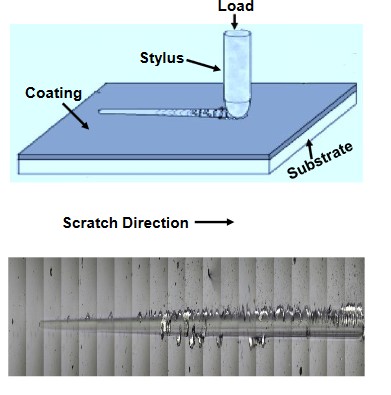
NewsInformation Center
Working Principle of Scratch Tests
2018/03/16
Scratch Tests
Scratch Hardness Test: Scratch with constant normal load on a specimen and on a reference specimen using a stylus. Scratch width
data are utilized to obtain the scratch hardness of the specimen.
Scratch Adhesion Test: This test is performed by applying either a progressive (~linearly increasing) or constant load.


Hardness determines the resistance of products to permanent deformation. There are three types of measurements that help to determine the hardness of a material, namely scratch hardness, rebound hardness tester and indentation hardness.The Scratch Tester hardness test determines the hardness of a product to abrasion and scratches due to a chafing from a sharp object. The test method is widely applied to determine the physical properties of a material. The test method is applicable mainly to gauge the quality of paint & plating and also to determine the quality of polymers, coated surfaces, ceramics and metals.
Measurement Principle:
Scratch hardness test strictly conforms to ISO standards. The test specimen is placed to represent the application of interest or coating to facilitate scratch width measurement. A constant force at a constant speed is applied by the needle to the test specimen and the scratch path is generated by the sliding and continuous movement of the needle against the sample surface. It is the best testing equipments for determining the entire range of mechanical properties of soft or hard coatings, thin or thick coatings of films and other substrates.
Scratch hardness test strictly conforms to ISO standards. The test specimen is placed to represent the application of interest or coating to facilitate scratch width measurement. A constant force at a constant speed is applied by the needle to the test specimen and the scratch path is generated by the sliding and continuous movement of the needle against the sample surface. It is the best testing equipments for determining the entire range of mechanical properties of soft or hard coatings, thin or thick coatings of films and other substrates.
Previous: The Operation Method of air permeability tester
N e x t : Operation Method Of Fabric Air Permeability Tester



